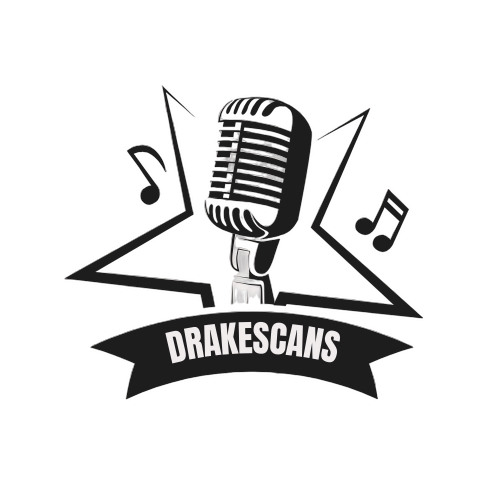Why Is Uhoebeans Software Update So Slow? Uncover the Frustrating Truth

In a world where instant gratification is the norm, waiting for a software update can feel like watching paint dry—especially when it comes to Uhoebeans. Users often find themselves staring at progress bars that move slower than a snail on vacation. But why does it take so long?
Overview Of Uhoebeans Software
Uhoebeans represents a modern software solution designed for optimal performance and user experience. Users often rely on this platform for various applications, from productivity tools to entertainment options. Reliable updates enhance the overall functionality and security of Uhoebeans.
Functionality hinges on complex algorithms and robust architecture. Efficient software relies on a streamlined codebase that minimizes errors. Updates ensure these systems maintain functionality and address vulnerabilities.
The update process can encompass several phases. First, users need to download necessary files from Uhoebeans servers. After downloading, installations commence, which may involve additional configurations. During this stage, the system checks for compatibility and integrates new features.
Factors such as server load commonly affect the speed of updates. Peak usage times lead to higher traffic, causing delays in downloading. Users may notice slow progress bars and extended waiting periods. Developers continually work to enhance server capacity to improve the user experience.
Another crucial element involves the quality of the internet connection. Consistent and high-speed connections facilitate smoother downloads. Fluctuating connectivity often results in pauses or interruptions, extending update times significantly.
While Uhoebeans software offers users exceptional tools and features, the update process can sometimes frustrate due to various external and internal factors. Each of these influences plays a role in how quickly users receive updates, affecting their overall experience with the software.
Factors Contributing To Slow Updates

Several factors impact the speed of software updates, particularly for Uhoebeans. Understanding these elements clarifies why users often experience delays.
Server Load and Performance
Server load plays a crucial role in update speed. During peak usage times, numerous users request updates simultaneously, overwhelming servers and slowing down processes. High traffic can result in longer waiting times for all users. Performance issues may arise from server configuration or maintenance activities. Optimizing server capabilities can provide faster update delivery during busy periods.
Network Connectivity Issues
Network connectivity significantly affects update efficiency. An unstable internet connection can interrupt downloads, causing delays. Depending on the bandwidth available, slower connections may take longer to download update files. Various factors, such as distance from the router, interference, or network congestion, contribute to connectivity problems. Improving network strength can enhance the speed of software updates considerably.
Device Compatibility Challenges
Device compatibility presents additional hurdles. Certain hardware specifications or operating system versions may not support the latest updates, leading to slower installation processes. Incompatibility can lead to extended checks and adjustments during the update. Users with older devices may experience significant delays due to limited processing power or insufficient storage. Regularly updating device software helps mitigate compatibility challenges and speeds up future updates.
User Experience And Feedback
Users frequently express dissatisfaction regarding the speed of Uhoebeans software updates. Many find the update process tedious and lengthy. Complaints often revolve around extended waiting times during installations. Users mention the feeling of being stuck, as if nothing is happening. Feedback regularly highlights issues such as slow download speeds and interruptions due to unstable connections. Requests for improvement in update efficiency indicate a strong desire for a better experience. Frustrations arise especially during peak usage hours when server overloads exacerbate delays.
Common Complaints
Notable complaints include excessively slow download and installation phases. Users frequently report disappointment when updates take longer than expected. Intermittent connection problems also contribute to the overall negative experience. Many find it frustrating when updates require multiple restarts or compatibility checks. Inefficient handling of large update files leads to additional concerns. Users often voice their desire for clearer communication about potential waiting times. The combination of these factors paints a picture of a challenging update process that detracts from the overall satisfaction with Uhoebeans.
Comparison With Competitors
Uhoebeans’ update experience contrasts sharply with competing software solutions. While some rivals offer rapid and seamless updates, Uhoebeans struggles to match this efficiency. Competitors typically provide clearer timelines and quicker installations. Users often switch to alternatives due to dissatisfaction with Uhoebeans’ slower processes. Comparison with other software highlights the advantages of optimized update algorithms employed elsewhere. Customers appreciate faster rollouts of new features and security patches from competing brands. Organizations often prioritize efficient updates to maintain operational continuity, placing Uhoebeans at a disadvantage in this regard.
Potential Solutions
Adjusting several factors can improve the speed of Uhoebeans software updates. Users can start by checking their internet connection. A stable and high-speed connection significantly shortens download times.
Monitoring server load is equally important. By scheduling updates during off-peak hours, the chances of encountering server congestion decrease. This simple shift can lead to quicker installations.
Upgrading hardware and operating systems also aids in compatibility. Newer devices often handle updates more efficiently, reducing installation time. For those with older hardware, evaluating the feasibility of an upgrade can bring lasting benefits.
Enabling automatic updates keeps software current without manual intervention. This ensures that updates apply seamlessly, preventing users from facing burdensome update processes later. Users miss fewer updates and enjoy enhancements regularly with this option.
Utilizing a wired connection, rather than relying on Wi-Fi, can further boost download speed. Wired connections typically provide steadier performance, reducing interruptions during updates. It’s a practical step for users experiencing frequent connectivity issues.
Lastly, providing feedback directly to Uhoebeans about update experiences can drive future improvements. User insights are invaluable for identifying specific pain points in the update process. This input may prompt them to enhance infrastructure, ensuring a smoother user experience moving forward.
Conclusion
The slow software update process for Uhoebeans can be a significant source of frustration for users. While the platform offers valuable features and enhancements, the lengthy update times can detract from the overall experience. Factors such as server load and network connectivity issues play a crucial role in these delays.
By understanding the reasons behind the slow updates, users can take proactive steps to mitigate some of the frustration. Implementing solutions like checking internet stability and scheduling updates wisely can lead to a smoother experience. Feedback from users is essential in driving future improvements, making it clear that addressing these concerns is vital for Uhoebeans to enhance user satisfaction and maintain competitiveness in the software market.
